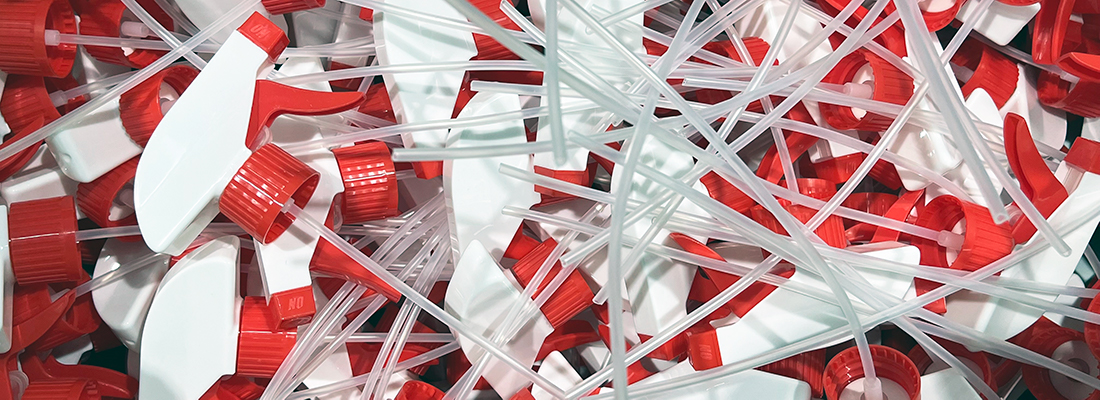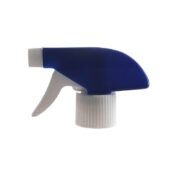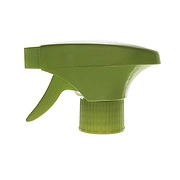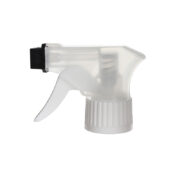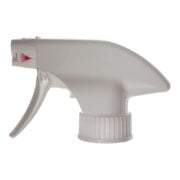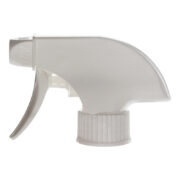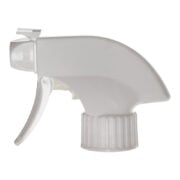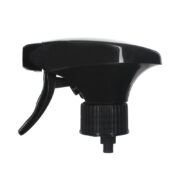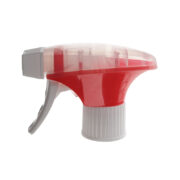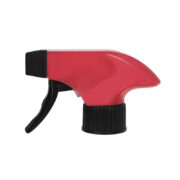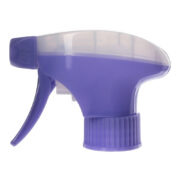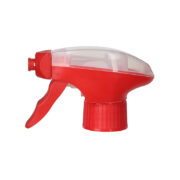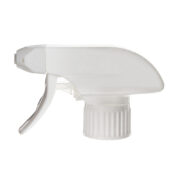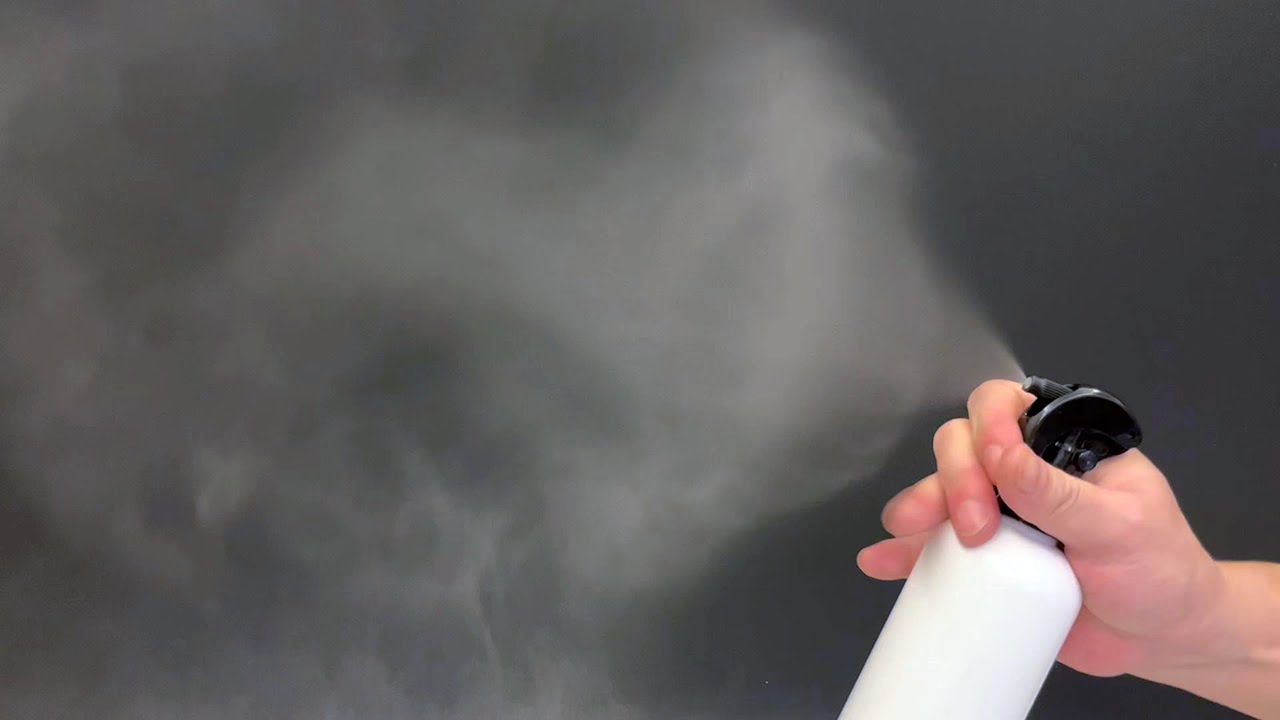Comprehensive Guide to Trigger Sprayers:
From Manufacturing to Nozzle Selection
By NABO Plastic – The wholesale manufacturer of plastic packaging with over ten years of experience
As a seasoned manufacturer of trigger sprayer, we’ve gained vast expertise in wholesale plastic packaging. Over the years, we’ve answered countless queries and built a rich knowledge base about trigger sprayer.
In this article, we’re eager to share our insights, taking you through the intricate world of trigger spray nozzles while unveiling the secrets to manufacturing success.
Whether you’re a novice or a seasoned professional in trigger sprayers, this guide is a valuable tool for research beginners and those ready to purchase.
This could be the most thorough guide to trigger sprayer guide you’ve ever read!
Table of contents:
- Introduction to Trigger Sprayers
- How Trigger Sprayers Work
- Applications of Trigger Spray
- Manufacturing of Trigger Sprayers
- Different Styles of Trigger Sprayers
- Understand Trigger Sprayer Nozzles
- Choose the Ideal Sprayer
- High-Quality Characteristics
- Personalization Options
- Free Samples and Best Quotes
1. What is a trigger sprayer?
A trigger sprayer is a versatile device composed of 12 to 15 components for dispensing various liquids. Its ergonomic design allows for comfortable use, accommodating 2 to 3 fingers on the trigger. The content within a corresponding plastic bottle is dispensed when the trigger is activated. The method of dispensation – be it as a spray, a stream, a fine mist, or foam – is dictated by the type of nozzle attached. The amount of liquid dispensed varies from 0.25ml to 3.5ml per stroke.
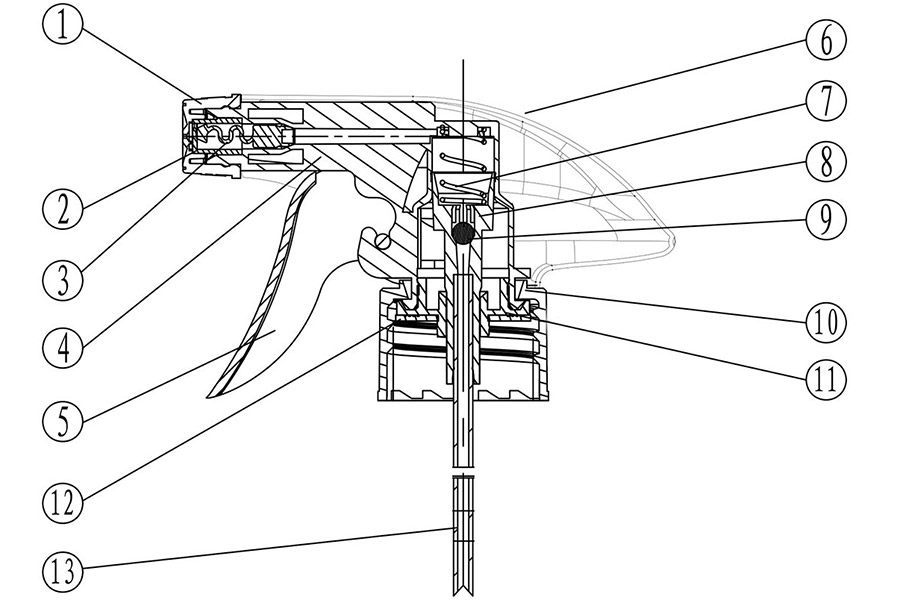
| No. | Component | Material | Description |
| 1 | Nozzle | PP | Forces the liquid out in different forms, such as a stream, spray, fine mist, or foam, through a small orifice. |
| 2 | Spray Valve | LDPE | Ensures that no air enters the pump. |
| 3 | Plastic Spring | LDPE | Pushes the spray nozzle to generate a stream or spray. |
| 4 | Inner Body | PP | Connects the trigger with the pump. |
| 5 | Trigger | PP | Activates the pump to transport the liquid to the nozzle. |
| 6 | Cover | PP | Shields the sprayer’s internal mechanisms. |
| 7 | Spring | SUS304H | Propels the piston to move the liquid. |
| 8 | Piston | HDPE | Impels the content into the pump body. |
| 9 | Ball Valve | Glass | Controls the flow of the liquid. |
| 10 | Closure/Collar | PP | Ensures compatibility with the bottle neck finish and securely screws onto it. |
| 11 | Cap Scall Ring | PP | Allows the sprayer to rotate 360 degrees. |
| 12 | Gasket | HDPE | Creates a better seal between the sprayer and bottle, preventing air or liquid leakage. |
| 13 | Dip Tube | LDPE | Positioned near the bottom of the bottle, the dip tube transfers the liquid. |
2. How does the trigger sprayer work?
A trigger sprayer is affixed to a bottle by screwing the pump onto the bottle’s compatible neck. The standard closure or collar threads and an internal PE gasket establish a seal between the sprayer and the bottle. At the same time, the dip tube extends to the bottle’s bottom to maintain contact with the liquid.
When you press the trigger, the pump activates the spring, which propels the internal piston, drawing liquid from the bottle into the pump body. This liquid first passes through a glass or plastic ball valve, which controls the amount of content entering the pump body.
Once the pump body fills with liquid, displacing the air, each trigger press delivers the content to the nozzle. A spray valve at the nozzle creates suction in the pump, drawing the liquid into the dip tube. When the nozzle switches to the working mode, the valve opens, and the nozzle forces the liquid through a small hole, producing a liquid flow.
Adjusting the nozzle allows you to dispense the liquid in various forms: spray, stream, fine mist, or foam. The spray nozzle acts as a one-way valve, preventing air inflow into the pump.
You can switch the nozzle to closed mode after use to prevent drips and accidental triggering, particularly by children.
3. What are the Applications of Trigger Sprayers?
Trigger sprayers are versatile tools for dispensing various liquid products in multiple settings. Their applications include the following:
- Health Care: disinfectant, hand sanitizer, liquid soaps
- Body Care: massage oil, face cleanser, sunscreen lotion, moisturizing lotion
- Hair Care: hair gel, hair water
- Home Care: floor cleanser, window cleaning, stain remover, mold remover
- Bathroom Use: sink & tub cleanser, toilet cleanser, shower cleanser, limescale remover
- Furniture Care: table surface cleanser, sofa cleanser, paint repair solutions
- Kitchen Use: oven cleaning, cooking oil
- Car Care: wheel hub cleanser, car seat cleaner, car wax
- Garden Care: flower watering, potted plant watering
4. How is a trigger sprayer manufactured?
The production of trigger sprayers involves several stages, which include:
4.1 – Injection Mold Manufacturing
Except for the steel spring and glass ball, all other components of the trigger pump are made from plastic. The creation of these parts necessitates between 10 and 13 sets of injection molds.
As a trigger sprayer manufacturer, we invest heavily in our mold-making process, aiming for the maximum number of mold cavities and the highest quality possible. By increasing the number of mold cavities, we can efficiently meet significant order demands and reduce our cost per product, passing the savings on to our customers.
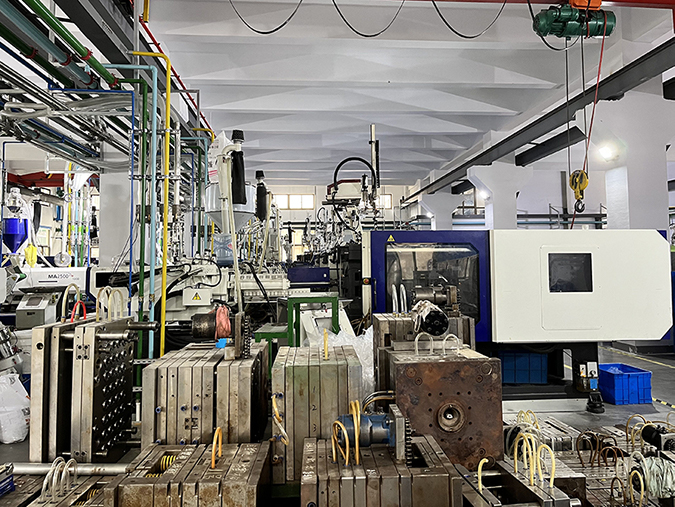
4.2 – Injection Molding Processing
Once the injection molds are prepared, we utilize 10 to 13 injection molding machines to operate these molds. Each mold is installed on an injection molding machine until the entire order for a batch is complete.
Our company prioritizes automated production to ensure consistent quality and high output while minimizing human error-induced defects. We operate 90 top-of-the-line injection molding machines with advanced manipulators, feeding, and recycling systems.
4.3 – Components Assembly
After molded components are manufactured, these are transported to the assembly workshop. Automated machines perform all assembly processes.
The piston, pump body, spring, and glass valve are assembled on one device to form a complete “pump.” This “pump” is combined with other components on another machine, including the collar, foam gasket, spray nozzle, and cover. Regular maintenance of these machines ensures their longevity and precision.
Our factory houses nearly 100 assembly machines, thus eliminating any waiting time for assembly processes and allowing our mechanics ample time for troubleshooting and maintenance.
4.4 – Dip Tube Insertion and Cutting
The length of the dip tube is critical to ensure no wastage of the liquid product inside the bottle. The trigger spray pump assembled in the previous step is taken to a dip tube cutting machine, where the dip tube is inserted into the trigger pump and cut to a fixed length. Before this process, our experts guide customers in choosing the correct tube size.
4.5 – Quality Control and Inspection
As an experienced trigger sprayer manufacturer, we implement rigorous quality control measures before the final products are delivered to our customers. These include a series of inspections, such as:
- Appearance Check – We inspect for deformations, spots, burrs, uniform color, and size within tolerance.
- Wall Thickness Check – We ensure the wall thickness is consistent and within tolerance.
- Thread Matching Test – We verify that the thread matches the neck finish of the bottle to prevent slippage or over-tightening.
- Liquid Leakage Test – we run multiple rounds of testing with a vacuum leak detector to ensure no liquid leaks.
- Stability of Liquid Output Per Stroke – We confirm that the liquid dispensing amount is consistent with each trigger press.

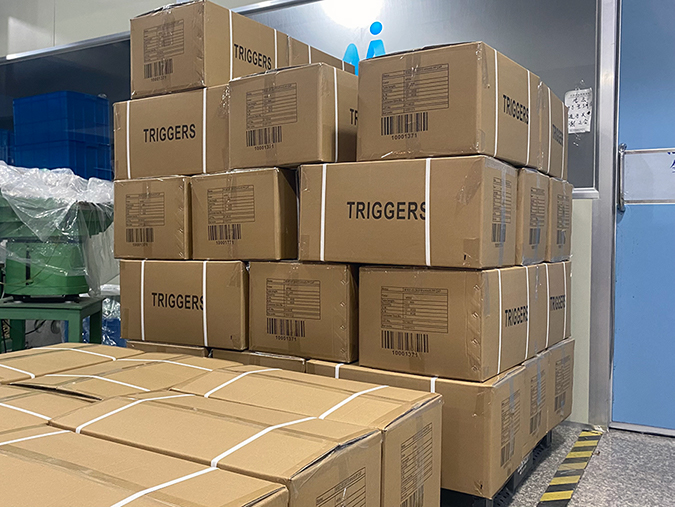
4.6 – Packaging before delivery
After all manufacturing processes are completed, we will pack the finished sprayers with standard export cartons for shipment. Our packing principles aim to optimize space within the shipping container, helping our customers save on shipping costs. By default, we use our standard cartons for shipping. However, we also accommodate requests for custom carton sizes and printed content on the outer carton, primarily when the products are directly supplied to retailers or end customers.
5. What are the Different Styles of Trigger Sprayers?
We categorize trigger sprayers into four main styles based on appearance and function, with two additional specialty styles.
5.1. General Purpose Sprayers
Also known as standard trigger sprayers, these are common choices for daily cleaners. The square nozzle, adjustable by turning clockwise or counterclockwise, lets you choose between “spray,” “stream,” or “off” settings.
Furthermore, the design of the pump body results in three sub-types:
- 5.1.1 Vertical Pump Type
This sprayer’s pump is perpendicular to the horizontal plane. Its more straightforward structure means a lower price, earning it the nickname “Economical Type.”
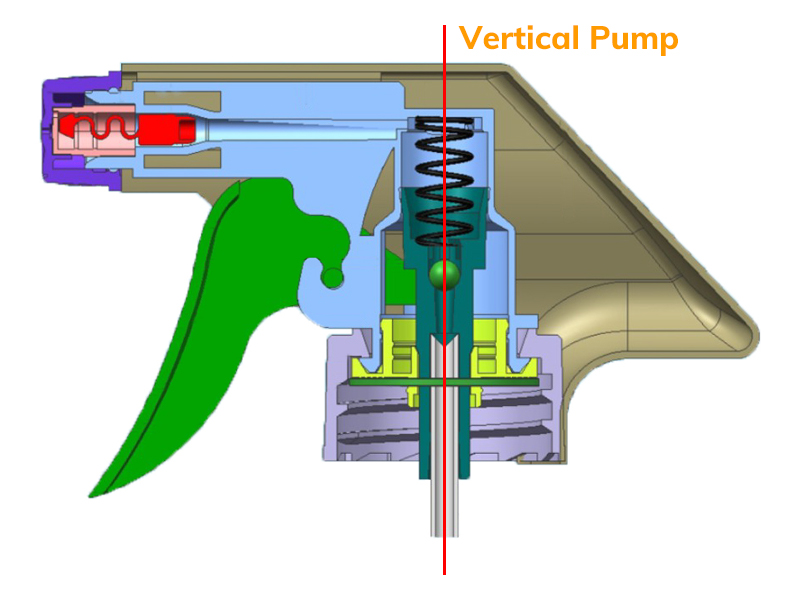
- 5.1.2 Horizontal Pump Type
The pump of this sprayer sits at an angle to the horizontal, resulting in a more complex mechanism than the vertical pump.
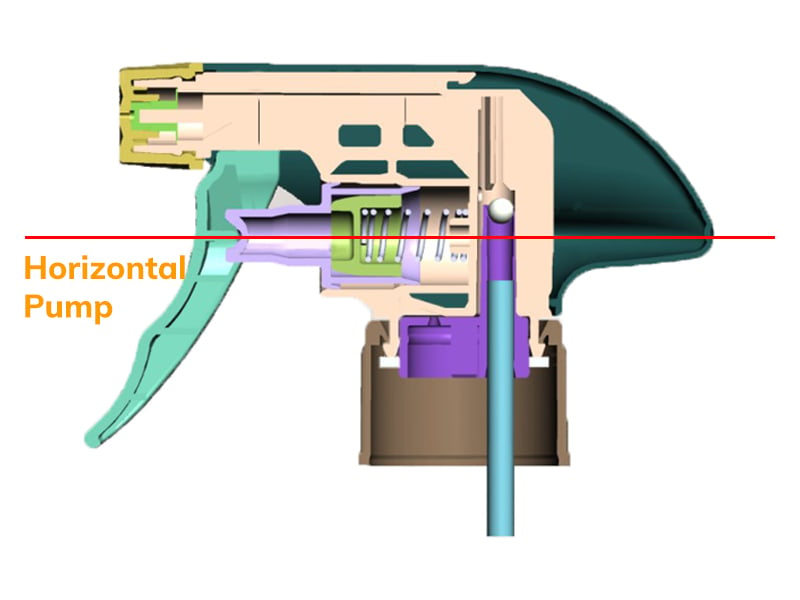
- 5.1.3 Inclined Pump Type
Similar to the horizontal pump type, this sprayer’s pump sits at an angle to the flat, with a more complex mechanism.
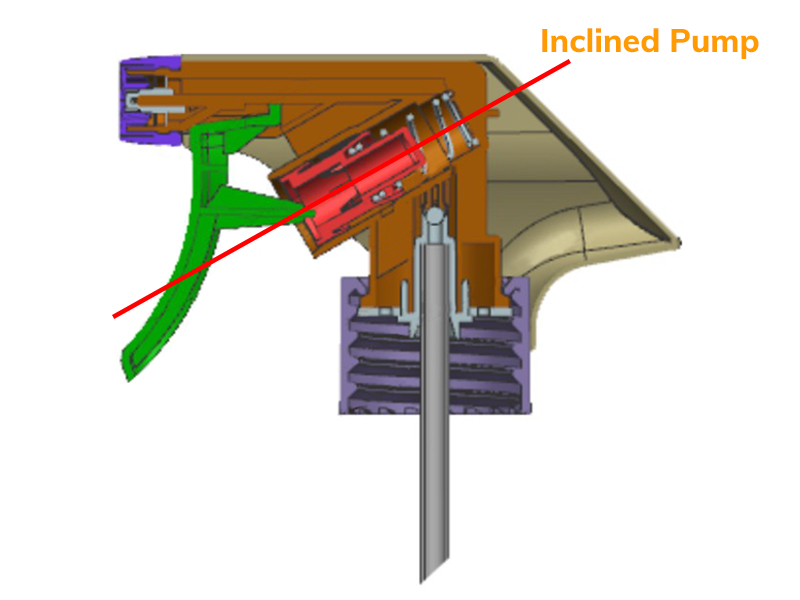
5.2. Foam Nozzle Sprayers
Foam trigger sprayers are equipped with a special nozzle that creates dense foam. Each trigger press transforms the liquid into foam. Two of the four sides of the nozzle are work modes, and the remaining two are off ways, preventing accidental triggering by children.
An optional metal or plastic mesh can be placed before the nozzle to distribute foam more evenly.
Ideal for large-area cleaning, the foam can cling to vertical surfaces longer, maximizing cleaning efficiency.
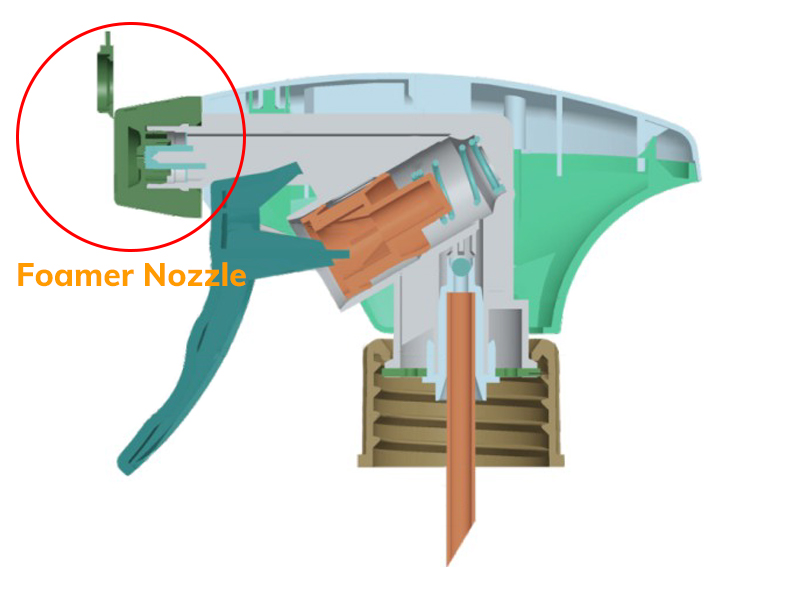
5.3. Mini Triggers
The mini trigger sprayers nozzle dispenses liquids in a fine mist by featuring a distinct curved shape. Their two-finger trigger design ensures a comfortable spraying grip. An added slot lock device or left-right button prevents leakage when not in use and protects children from accidental triggering.
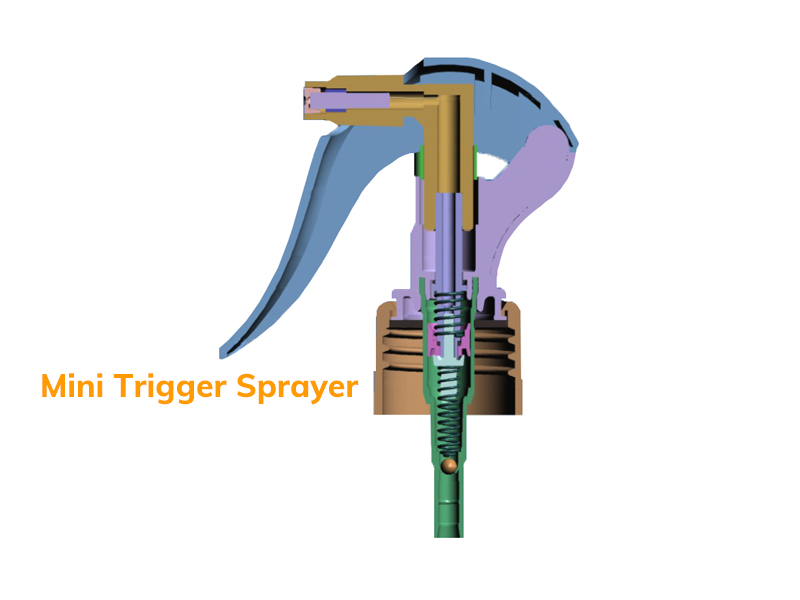
5.4. Heavy-Duty Chemical Resistant Sprayers
Ideal for high-viscosity liquids, we offer various styles of heavy-duty sprayers. With their robust appearance, these sprayers have an ergonomic trigger design reducing user fatigue during prolonged use.
The trigger sprayer’s nozzle features a rotatable, removable cover cap for flexible dispensing. Adjusting the cap counterclockwise allows for “stream” and “spray” dispensing. When fully tightened, the cap prevents leakage and accidental triggering.
5.5. Featured: All Plastic Trigger Sprayers
As an all-plastic sprayer variant of the general-purpose sprayer, this model uses POM (Polyoxymethylene) plastic to replace the typically stainless-steel spring and glass ball valve.
This metal-free design prevents rusting, making it ideal for liquids incompatible with metal.
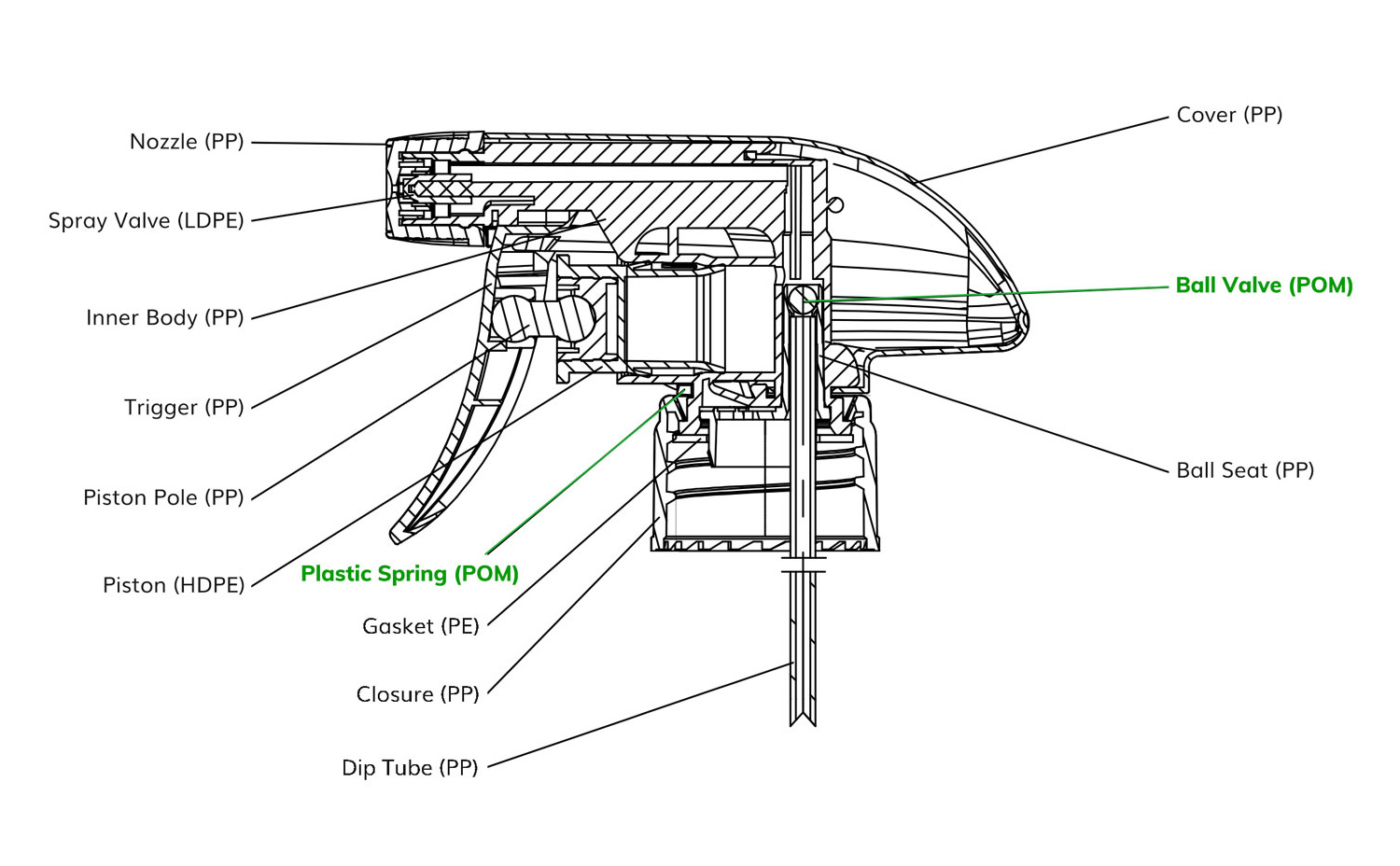
5.6. Featured: Upside-Down Pumps
As the name implies, thanks to a specially designed pump mounted on the bottom, you can use these sprayers upside down. This unique design applies to a range of trigger pumps with similar structures.
Check below for upside-down trigger pumps that might interest you.
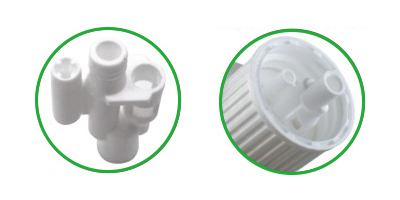
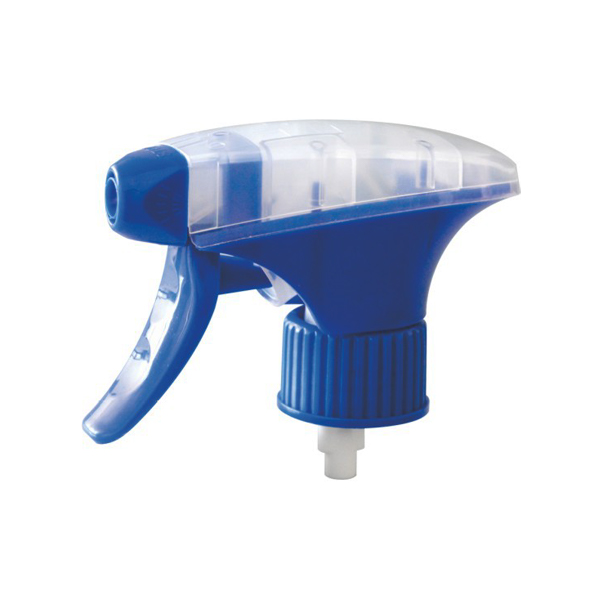
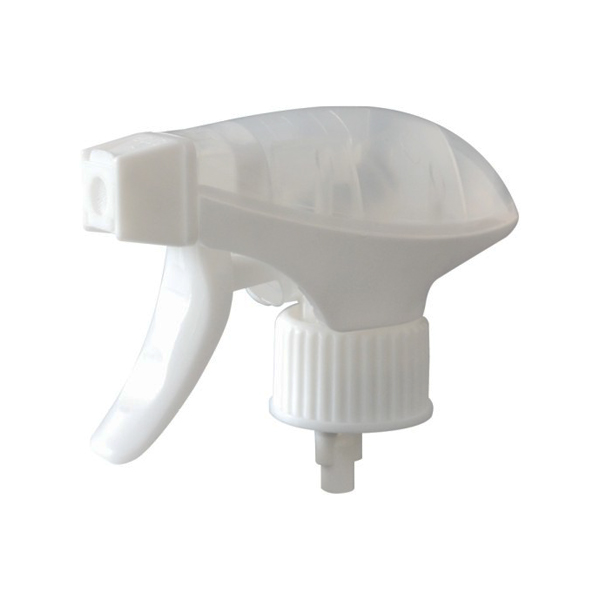
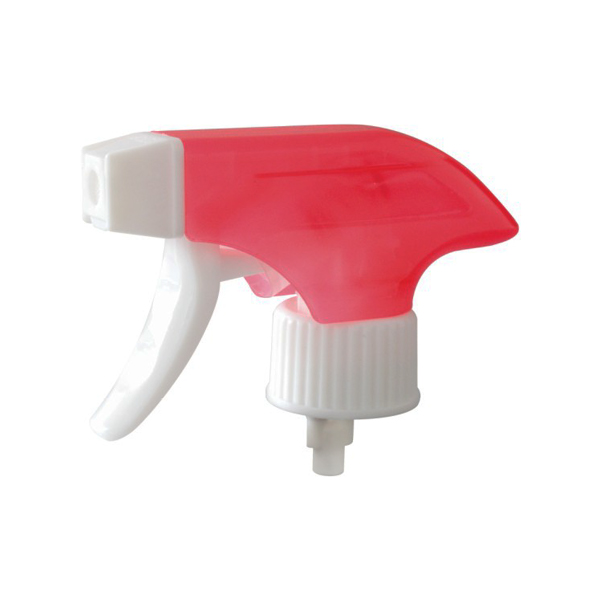
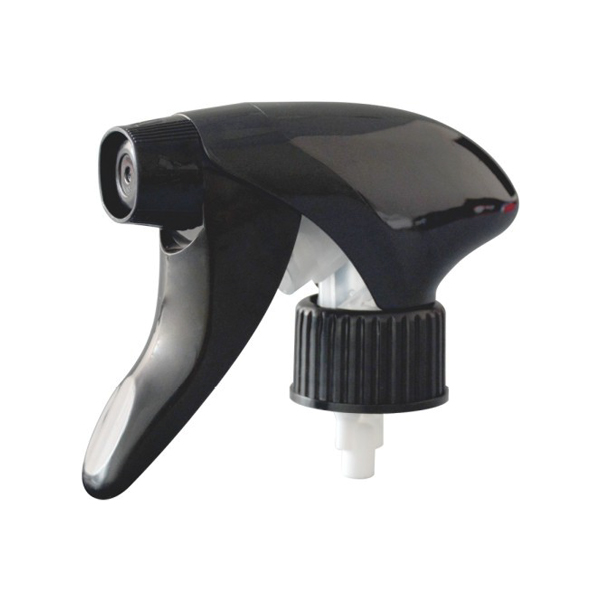
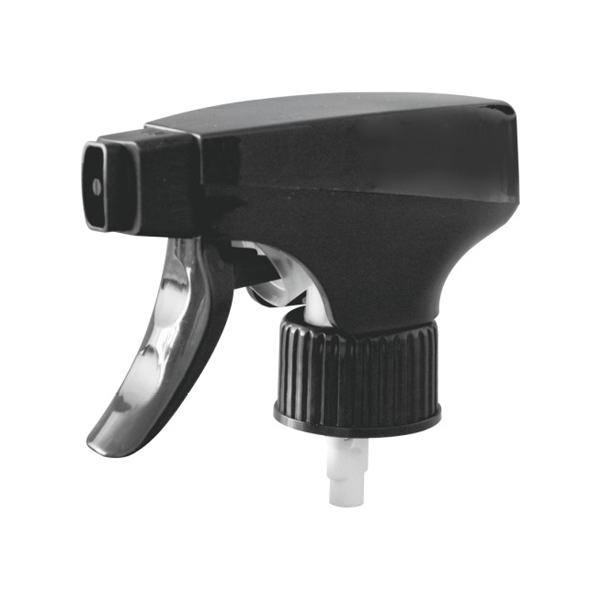
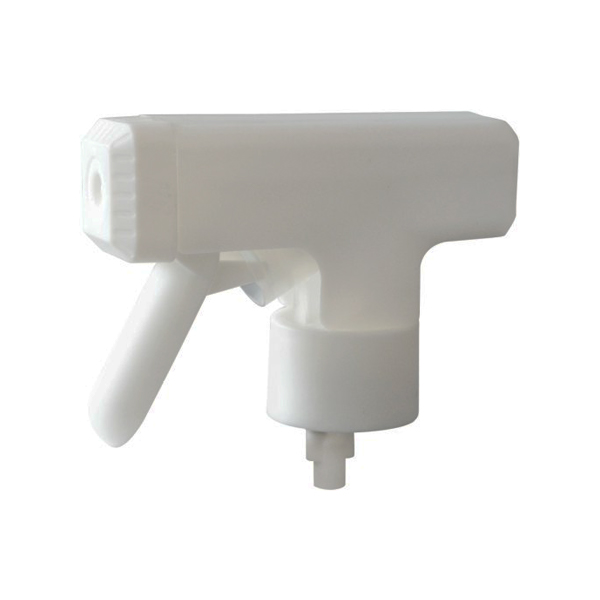
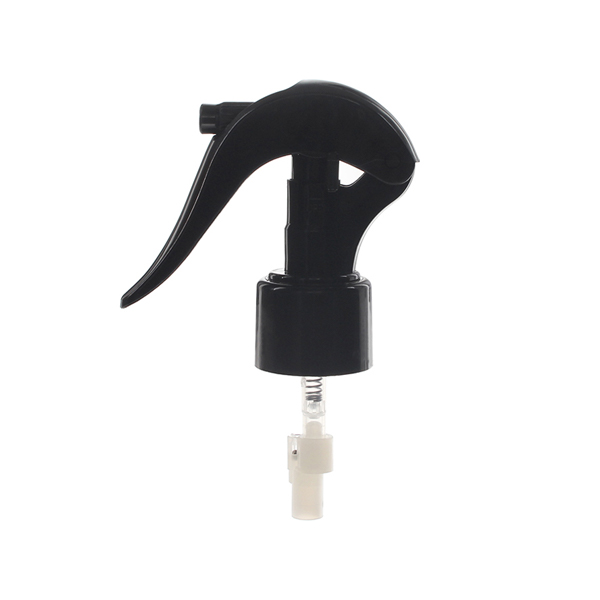
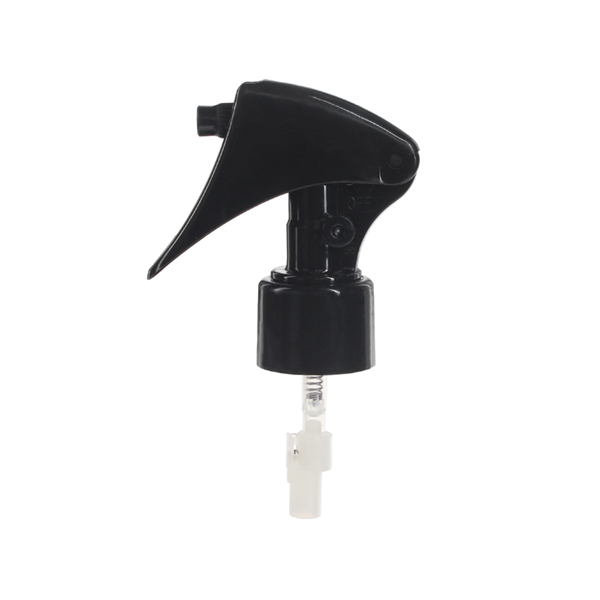
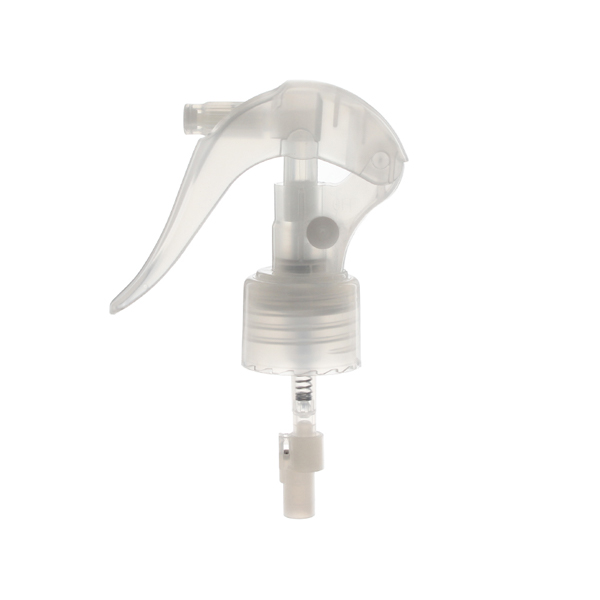
6. Exploring the Functionality of Trigger Sprayer Nozzles
The trigger sprayer nozzle, or head of the sprayer, plays a pivotal role in determining how the liquid dispenses. Four main types of dispensing options exist for trigger pumps:
Spray Nozzle: This option sprays the liquid in a fine mist, creating tiny droplets that disperse evenly in the air. It’s suitable for a wide array of regular products.
Stream Nozzle: It propels the liquid in a continuous, targeted line. It’s an excellent option for applying high product concentrations to a small, specific area.
Fine Mist Spray Nozzle: This nozzle produces even smaller droplets than the regular spray nozzle, making it perfect for products requiring small, precise doses.
Foam Nozzle: This nozzle transforms liquids into foam, a practical option for covering large areas using minimal product.
7. How to Choose the Ideal Trigger Sprayer for Your Needs?
We hope the previous sections (5 and 6) have helped you identify the style of trigger spray pump you need.
However, the selection process might be more complex, involving other factors such as neck finish, color, and dip tube length.
Here, we aim to simplify this decision-making process for you.
7.1 Select the Appropriate Neck Finish
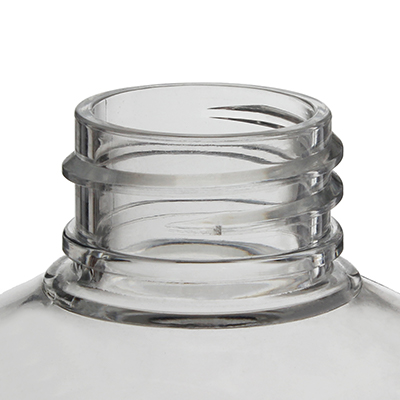
Initially, you need to ensure the neck finish of the sprayer’s clousure matches your bottle’s neck finish. For instance, a bottle with a 28-410 neck finish requires a corresponding 28-410 sprayer.
The two figures denote the screw thread neck finish: the first indicates the outer neck finish diameter (including the thread), and the second specifies the thread style.
For more information on neck finish sizes, please refer to our comprehensive Guide to Neck Finish.
7.2 Select and Customize a Suitable Color
We offer a wide range of color choices for each component of the trigger sprayer. You can select from our existing content or customize your color to match your packaging aesthetics. Here are some options:
- Transparent color – Made from pure original material, without any color masterbatch.
- Translucent color – Contains a small amount of color masterbatch, allowing light to pass through.
- Solid color – Made with color masterbatch, blocking sunlight. Standard solid colors include white, black, red, and blue.
- Mixed color – Different colors can be applied to the same sprayer’s trigger, nozzle, cover, or collar.

7.3 Determine the Correct Dip Tube Length
Choosing the right dip tube length is essential for efficient liquid dispensing. If the tube is too long or too short, it can lead to wasted product. Ideally, the dip tube should curve naturally inside the bottle, with its end touching the bottom edge.
The dip tube’s diameter may vary depending on the trigger pump style and the liquid’s viscosity. For thick or high-viscosity products, a larger diameter is preferred.
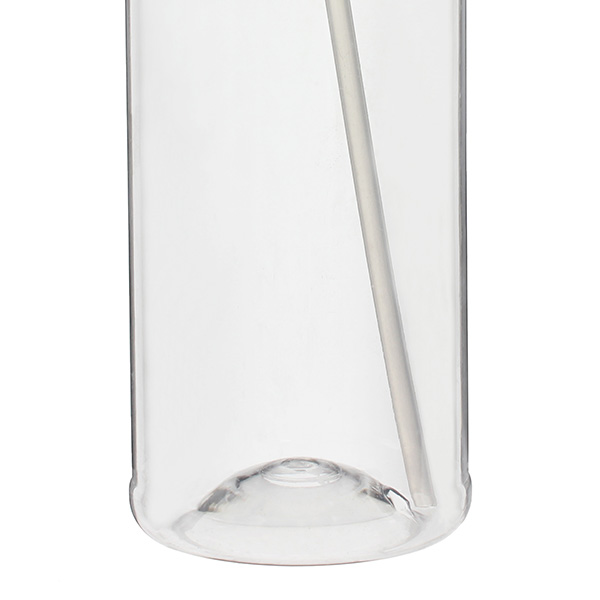
It’s also essential to ensure the tube end doesn’t flush with the bottle’s bottom to avoid blockages. We employ two methods to prevent such issues:
- Cutting the dip tube end into an angled or V shape.
- Or adding a filter-like device to the tube’s end.
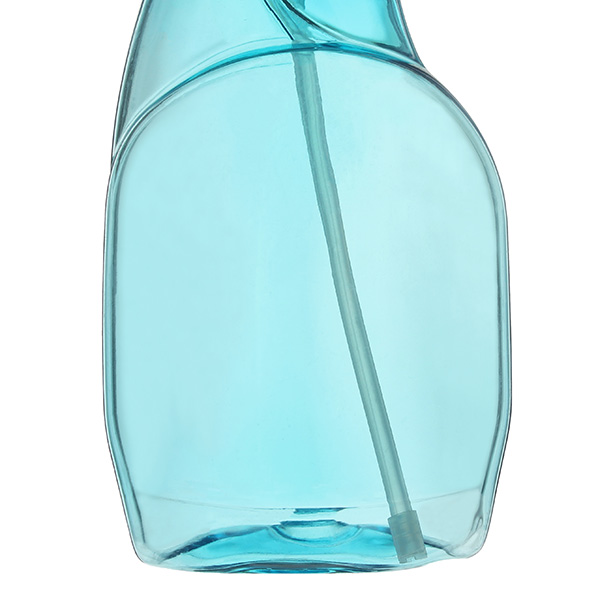
8. Characteristics of High-Quality Trigger Sprayers
Safe Materials
High-quality trigger sprayers are crafted from new polypropylene (PP) plastic, free from BPA and lead, making them safe for various uses. They comply with FDA and CE standards.
User-Friendly
Quality sprayers should have clear usage indications, including opening and closing and adjusting the nozzle to dispense as spray, stream, or foam.
Comfortable Grip
The trigger’s design largely influences user comfort, considering ergonomics, slip resistance, and the type of liquid being dispensed. For example, triggers are typically wider for high-viscosity products and longer for heavy-duty usage.
Leak-Proof
High-quality sprayers should not leak from the bottle’s neck or the nozzle. The collar thread must fit the bottle neck perfectly, and the nozzle’s seal should be precise and well-tested to ensure no leakage during use or transportation.
Consistent Output
While there may be minor variances in the amount of liquid output per stroke, these should be minimal to avoid waste or ineffectiveness, especially for sensitive liquid products.
Resistant to Fatigue
Especially for frequent users, sprayers need to be fatigue resistant. A light-pressure, ergonomically designed trigger can provide a comfortable user experience.
Child-Resistant
Child safety is paramount. All our sprayers come equipped with a lock to prevent accidental usage by children.
Reusable
Durable materials and excellent design make these trigger pumps long-lasting, allowing reuse over extended periods.
9. Personalizing Your Trigger Sprayer
With a trigger spray pump’s internal mechanism already assembled — including the pump, piston, spring, ball valve, and inner body — various styles emerge by combining different trigger sprayer nozzle designs, trigger, collar, and outer cover designs. The possibilities are limitless as long as we continue to develop new molds for new designs.
Once you grasp these combinations, it’s easy to customize your ideal sprayer or even create a market sensation with our design options and replacements. We’ll use a general-purpose trigger sprayer as an example to illustrate our comprehensive customization services.
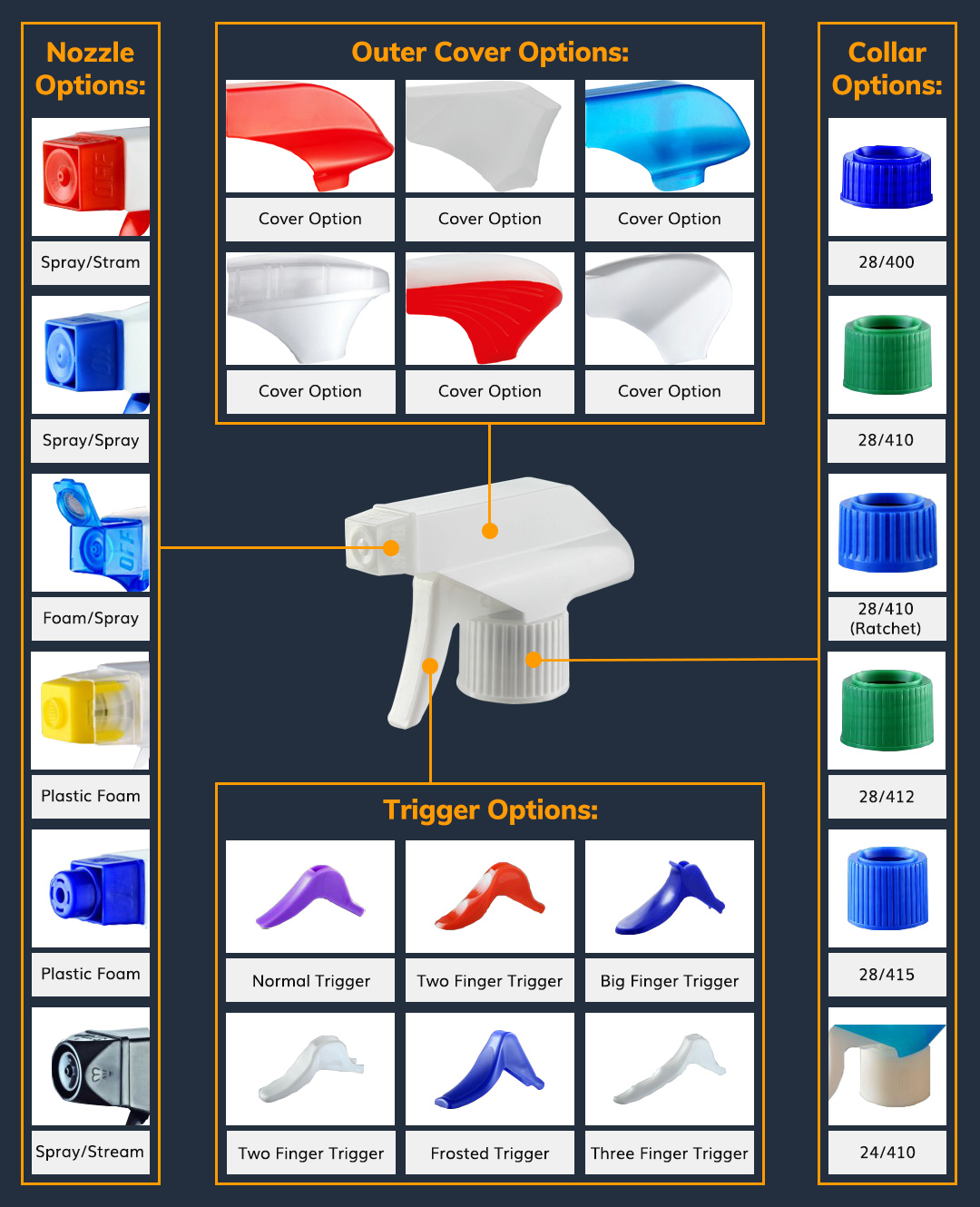
10. Request Free Samples and the Best Quote
Check Out Our Popular, Top-Selling, and Latest Products
Some of the customizations mentioned earlier are readily available, while others might take more time. If you need help with the style to opt for, we recommend looking at the Trigger Sprayers on our website. While these products represent just a fraction of the customizations mentioned above, they are the top sellers, market favorites, and the latest additions to our line-up.
In-Stock Products & Complimentary Samples
We maintain a stock of most sprayers to meet our customers’ immediate needs. If any model catches your eye, we’ll provide free samples for a closer examination before you make a formal order.
Bulk Purchase Savings
Should you be drawn to a specific style and considering a large-scale order, we invite you to Request a Competitive Quote.
Our factory constantly develops and adds the newest offerings to meet customers’ needs. Our sales representative and the expert team always stand by to help you find the best packaging solution for your requirements. If you still need help finding a suitable trigger sprayer, don’t hesitate to contact us. We’re just a message away!
